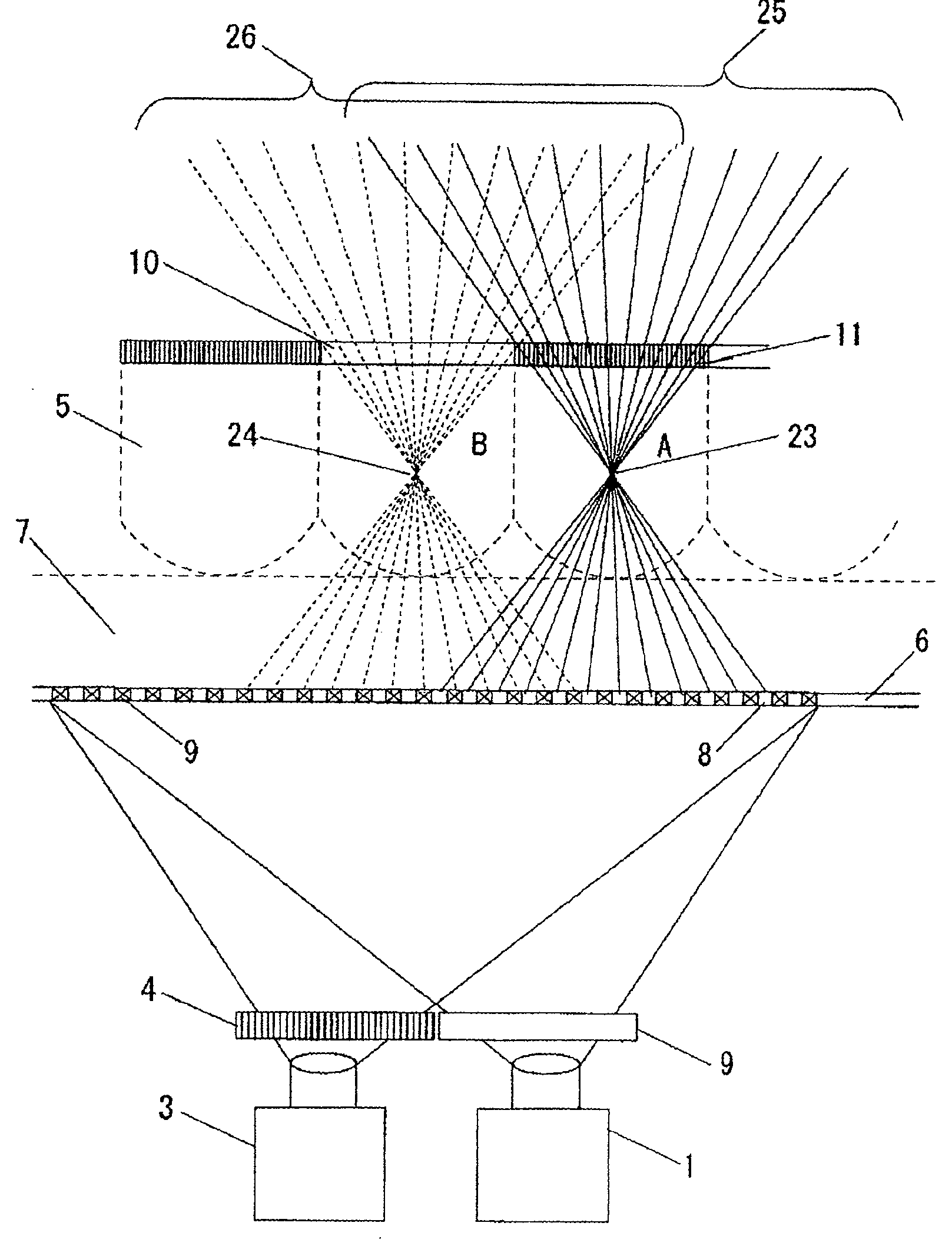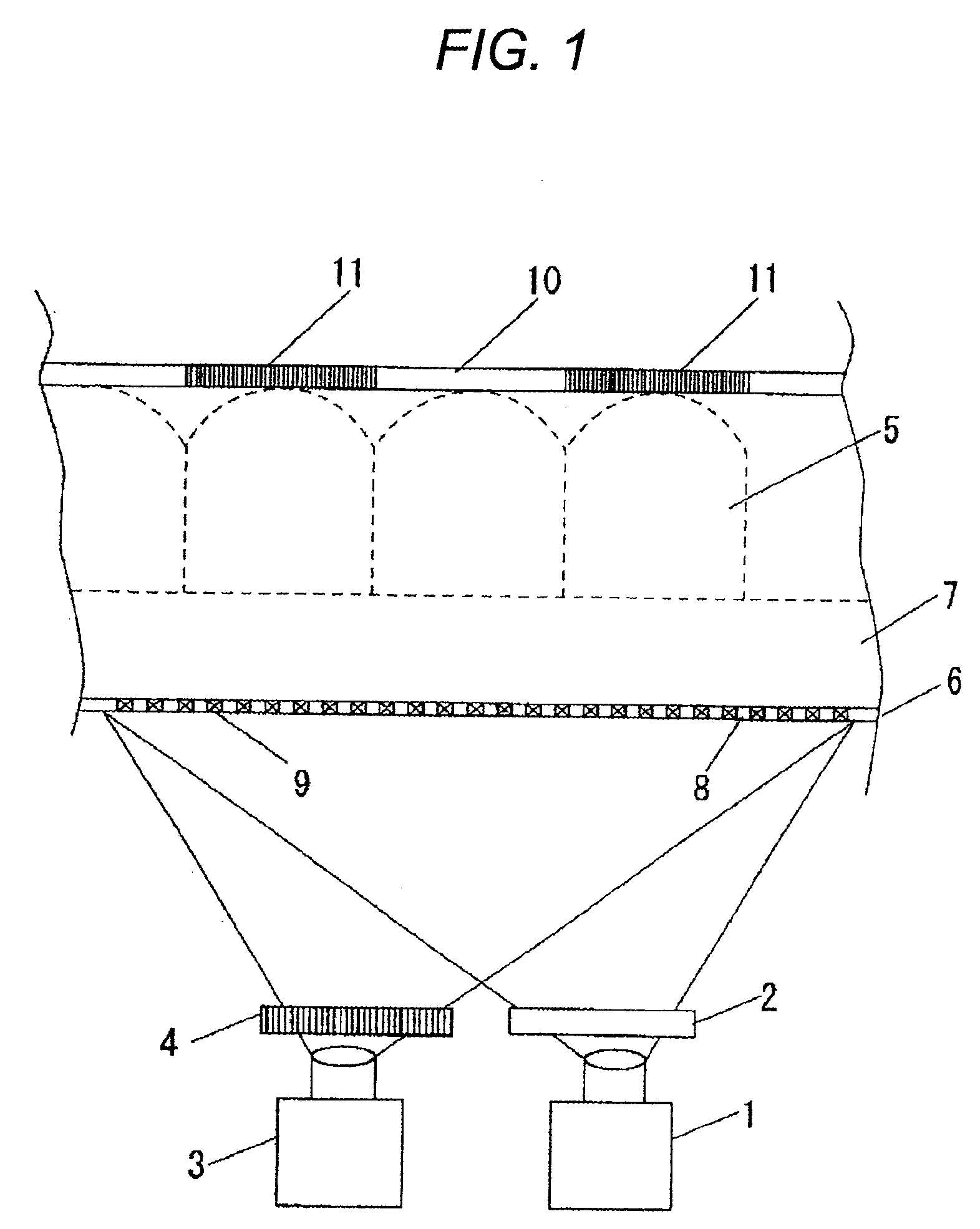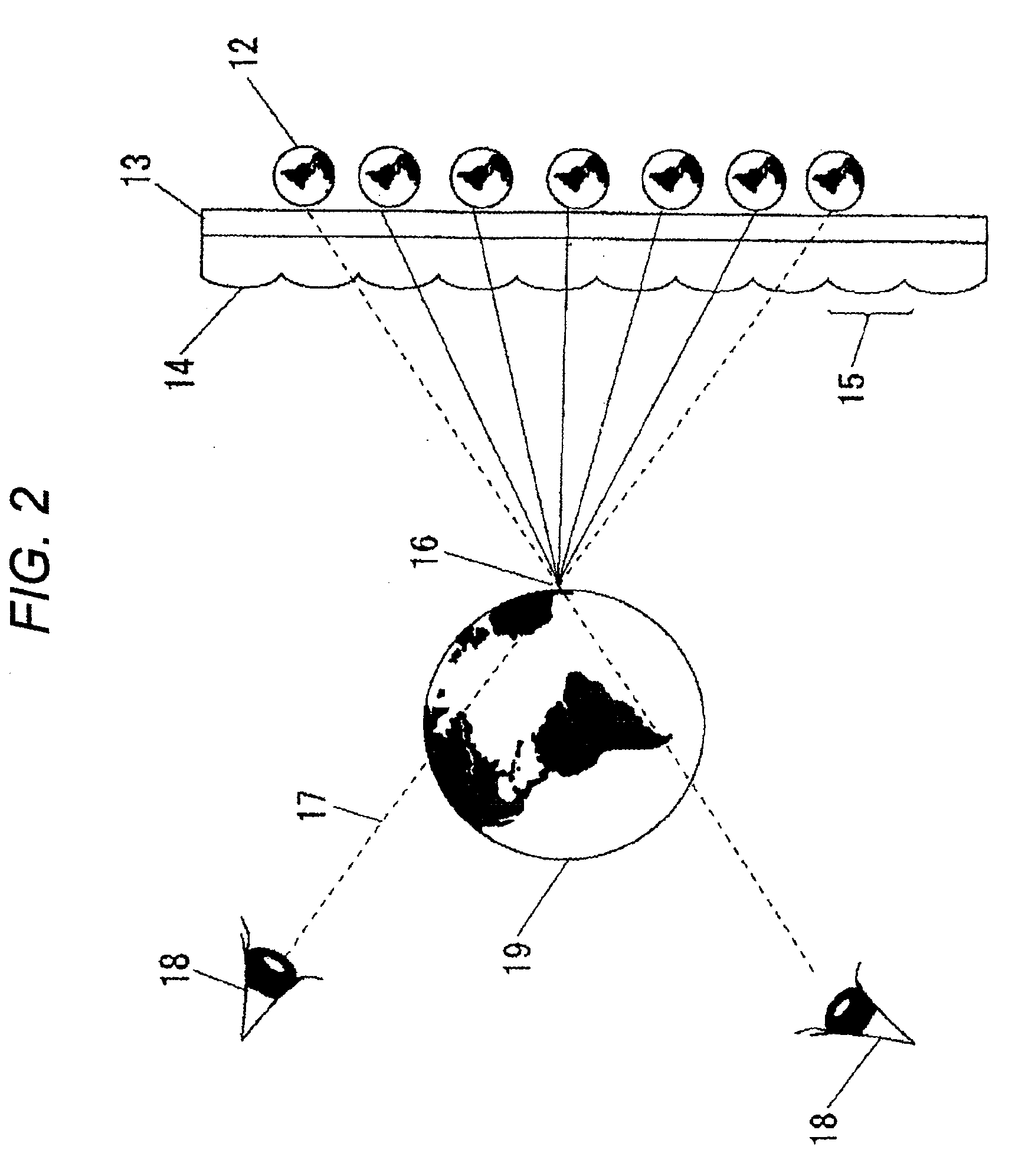Project-type three-dimensional image reproducing apparatus
a three-dimensional image and reproducing apparatus technology, applied in the field of project-type three-dimensional image reproducing apparatus, can solve the problems of large-scale apparatus and inconvenience, loss of stereoscopic effect, and optical configuration required to perform conventional stereographs with naked eyes, so as to prevent crosstalk between adjacent lenses or adjacent hologram optical elements, stable stereoscopic image, and avoid distortion or shift of images
- Summary
- Abstract
- Description
- Claims
- Application Information
AI Technical Summary
Benefits of technology
Problems solved by technology
Method used
Image
Examples
Embodiment Construction
[0025]The present invention can be applied to a display method, such as integral photography, a lenticular method, a parallax barrier method, and an ultra-multiple lens method, and the like, which enables provision of stereogram display with naked eye by combination of two-dimensional image information including parallax information, a lenticular lens array, a slit-shaped barrier such as liquid crystal, and a fly-eye lens or a hologram optical element. A preferred embodiment of a projection-type three-dimensional image reproducing apparatus of the present invention will be described hereunder in detail by reference to the drawings. Respective embodiments illustrate the case of use of a lens array. However, the same also applies to the case of use of a hologram optical element.
[0026]FIG. 1 is a view showing a system configuration of an optical system that is the principal part of a projection-type three-dimensional image reproducing device of an embodiment of the present invention.
[0...
PUM
 Login to View More
Login to View More Abstract
Description
Claims
Application Information
 Login to View More
Login to View More - R&D
- Intellectual Property
- Life Sciences
- Materials
- Tech Scout
- Unparalleled Data Quality
- Higher Quality Content
- 60% Fewer Hallucinations
Browse by: Latest US Patents, China's latest patents, Technical Efficacy Thesaurus, Application Domain, Technology Topic, Popular Technical Reports.
© 2025 PatSnap. All rights reserved.Legal|Privacy policy|Modern Slavery Act Transparency Statement|Sitemap|About US| Contact US: help@patsnap.com



